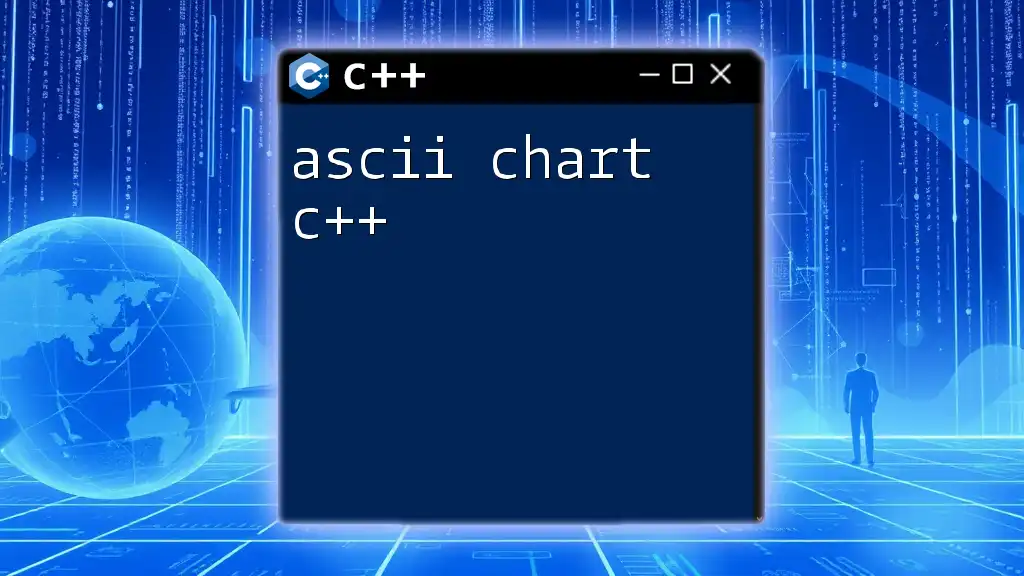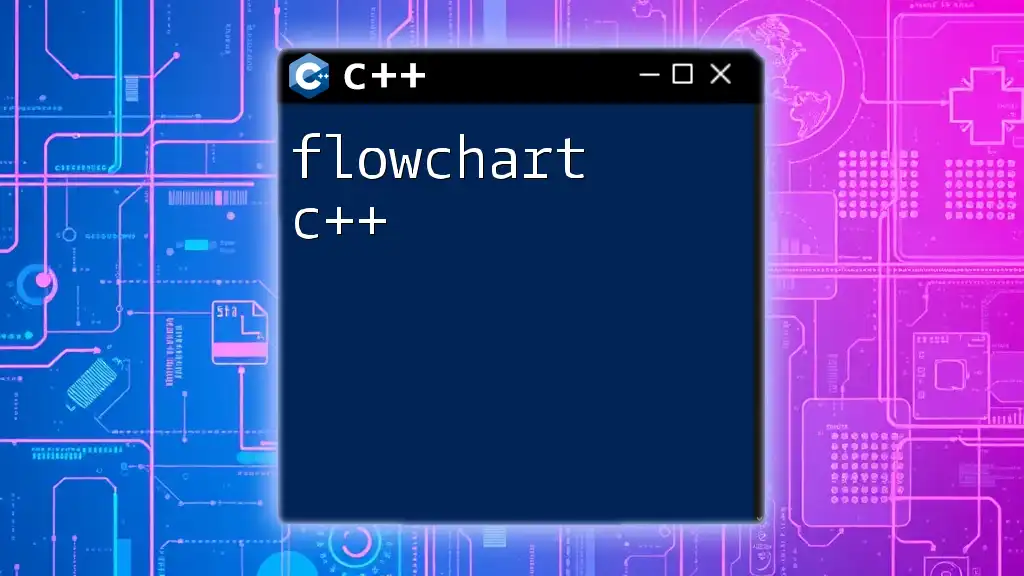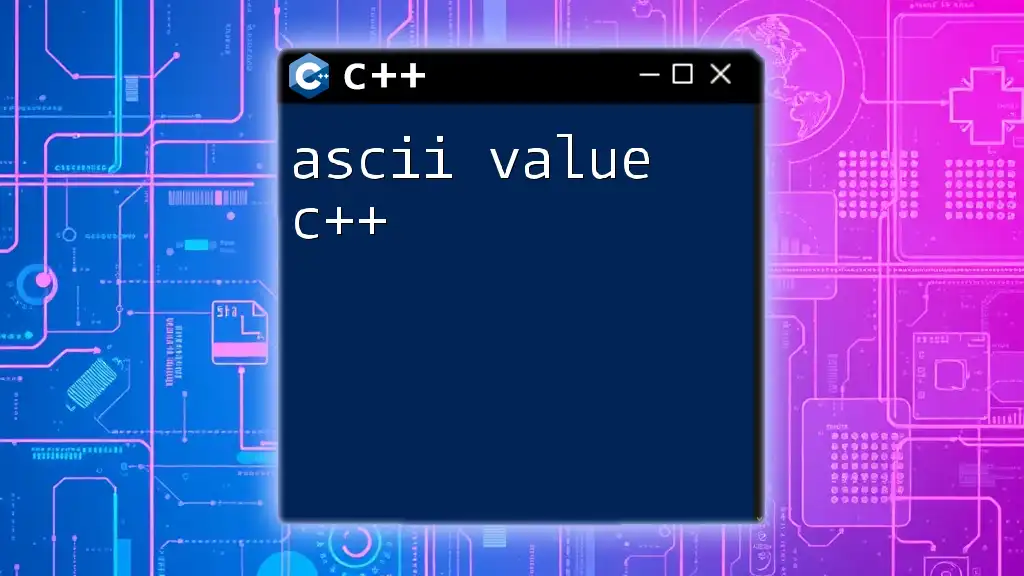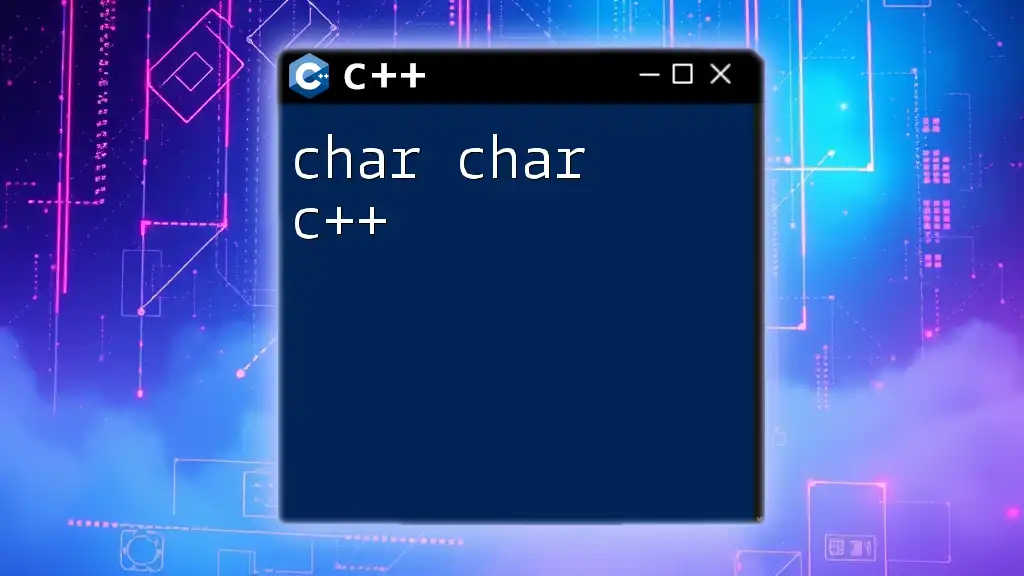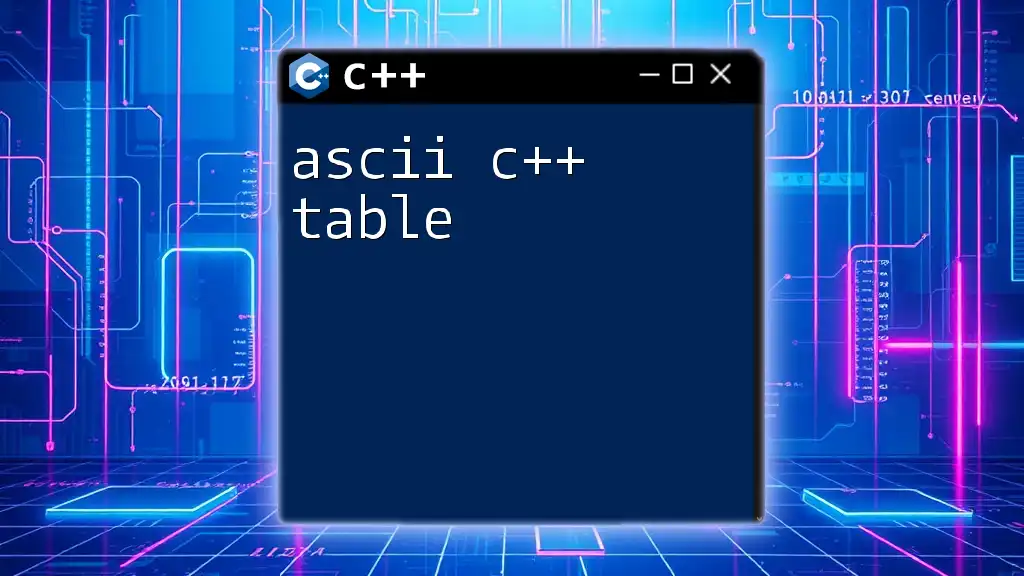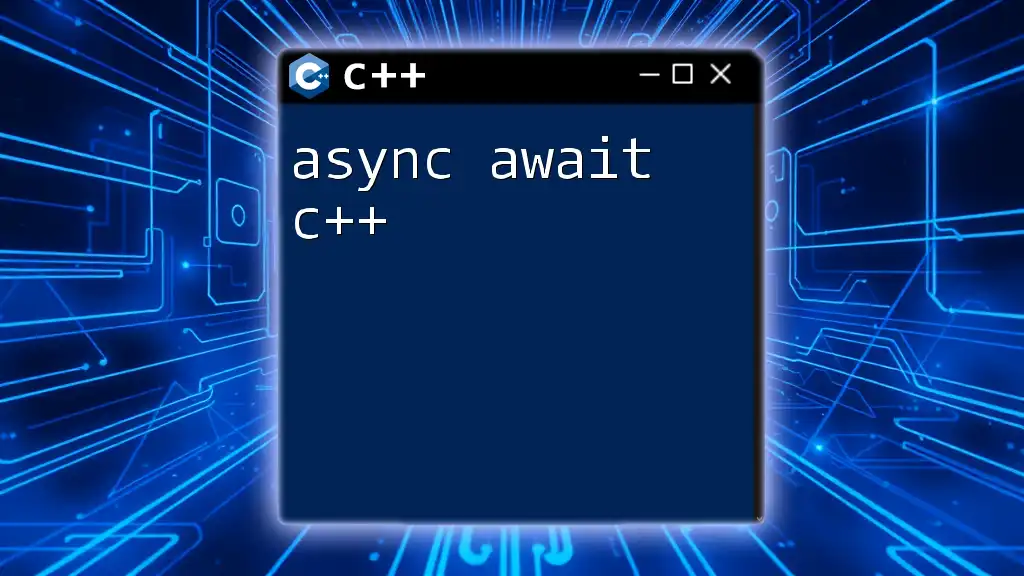In C++, you can create an ASCII chart to display character values alongside their corresponding numeric codes using a simple loop. Here's a code snippet to illustrate this:
#include <iostream>
int main() {
std::cout << "ASCII Chart:\n";
for (int i = 0; i < 128; ++i) {
std::cout << "Character: " << static_cast<char>(i) << " - ASCII Code: " << i << '\n';
}
return 0;
}
Understanding ASCII
What is ASCII?
ASCII, which stands for American Standard Code for Information Interchange, is a character encoding standard used to represent text in computers and communication equipment. It was developed in the early 1960s and has played a vital role in the evolution of computer systems. ASCII assigns a unique numerical value to each character, which allows for electronic communication of text across different devices and platforms.
Basic ASCII Table
The ASCII table comprises a list of 128 character codes, which include control characters (like newline and carriage return), printable characters (letters, digits, punctuation marks), and special symbols. For example, the letter 'A' corresponds to the decimal value 65, while the letter 'a' corresponds to 97. Understanding these mappings is crucial for developers working with text processing in C++.
ASCII Representation
Each character in the ASCII set is represented by a unique 7-bit binary number. For example, the letter 'A' can be represented as 01000001 in binary form. This numeric representation allows text data to be easily processed by machines.
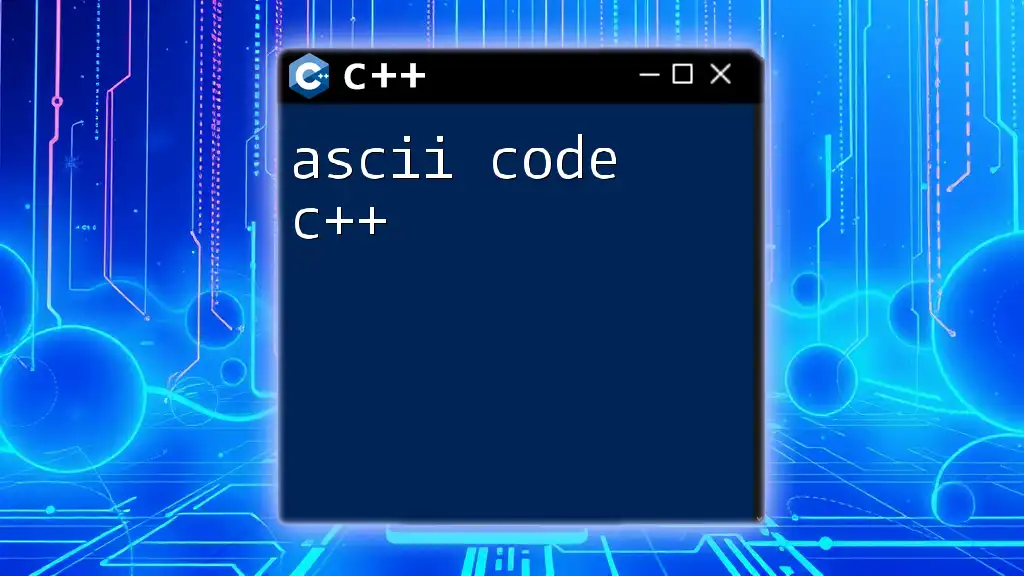
Using ASCII in C++
Printing ASCII Characters
In C++, printing ASCII characters is quite straightforward. By using basic output streams, you can display both the character itself and its corresponding ASCII value. Here's a simple example:
#include <iostream>
int main() {
char c = 'A';
std::cout << "The ASCII value of " << c << " is " << int(c) << std::endl;
return 0;
}
In this snippet, we simply convert the character 'A' to its integer ASCII value using the `int()` function.
Generating an ASCII Chart
To create a full ASCII chart, you can utilize loops to iterate through the range of ASCII values. Below is an example that displays all standard ASCII characters:
#include <iostream>
int main() {
std::cout << "ASCII Table:\n";
for (int i = 0; i <= 127; ++i) {
std::cout << i << " : " << char(i) << "\n";
}
return 0;
}
In this code snippet, we loop from 0 to 127 and print out each ASCII value alongside its corresponding character representation.
Customizing the ASCII Chart Output
To enhance the output of the ASCII chart, we can use manipulators for better formatting. This can make it easier to read. The following example demonstrates how to align the output neatly:
#include <iostream>
#include <iomanip>
int main() {
std::cout << std::left << std::setw(10) << "Decimal"
<< std::setw(10) << "Character" << "\n";
for (int i = 0; i <= 127; ++i) {
std::cout << std::left << std::setw(10) << i
<< std::setw(10) << char(i) << "\n";
}
return 0;
}
Here, we use `std::left` and `std::setw` to format the output, making the ASCII chart visually appealing and organized.
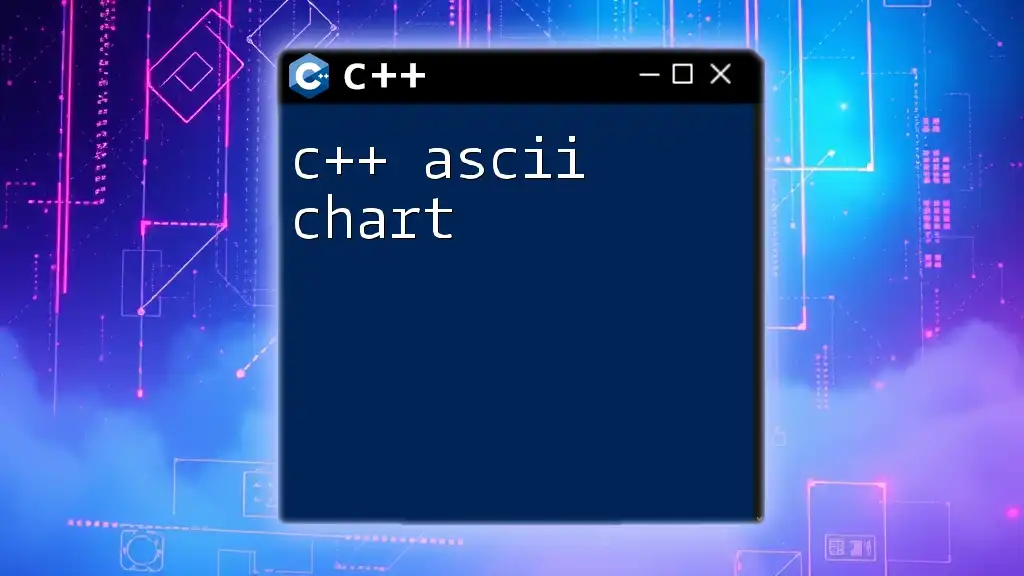
Practical Applications of ASCII in C++
ASCII and Strings
ASCII is especially significant when working with strings in C++. Understanding how to convert characters to their ASCII values can be vital for tasks such as sorting or searching. Here’s how you can loop through a string to output each character with its ASCII value:
#include <iostream>
#include <string>
int main() {
std::string str = "Hello";
for (char& c : str) {
std::cout << c << " : " << int(c) << "\n";
}
return 0;
}
This code illustrates the process of iterating through each character in the string "Hello" and displaying its ASCII representation.
ASCII in File Operations
ASCII is fundamental when working with text files in C++. You might need to read or write ASCII characters for configuration files, logs, or data interchange. Below is an example of writing an ASCII table to a text file:
#include <iostream>
#include <fstream>
int main() {
std::ofstream file("ascii_table.txt");
if (file.is_open()) {
for (int i = 0; i <= 127; ++i) {
file << i << " : " << char(i) << "\n";
}
file.close();
} else {
std::cerr << "Unable to open file";
}
return 0;
}
In this example, we create a file named ascii_table.txt and write the ASCII values and corresponding characters into it. This approach can be helpful for documentation or reference purposes.

Conclusion
In wrapping up, understanding the ASCII chart in C++ is essential for any programmer, especially when it comes to text processing and data representation. ASCII not only serves as a foundation for how characters are represented in computing but also opens up various possibilities for coding functional and efficient programs. Whether you're manipulating strings, creating files, or printing character values, getting accustomed to ASCII will enrich your C++ skill set.
As you continue your programming journey, exploring deeper applications of ASCII can provide valuable insights into character encoding and data handling.

